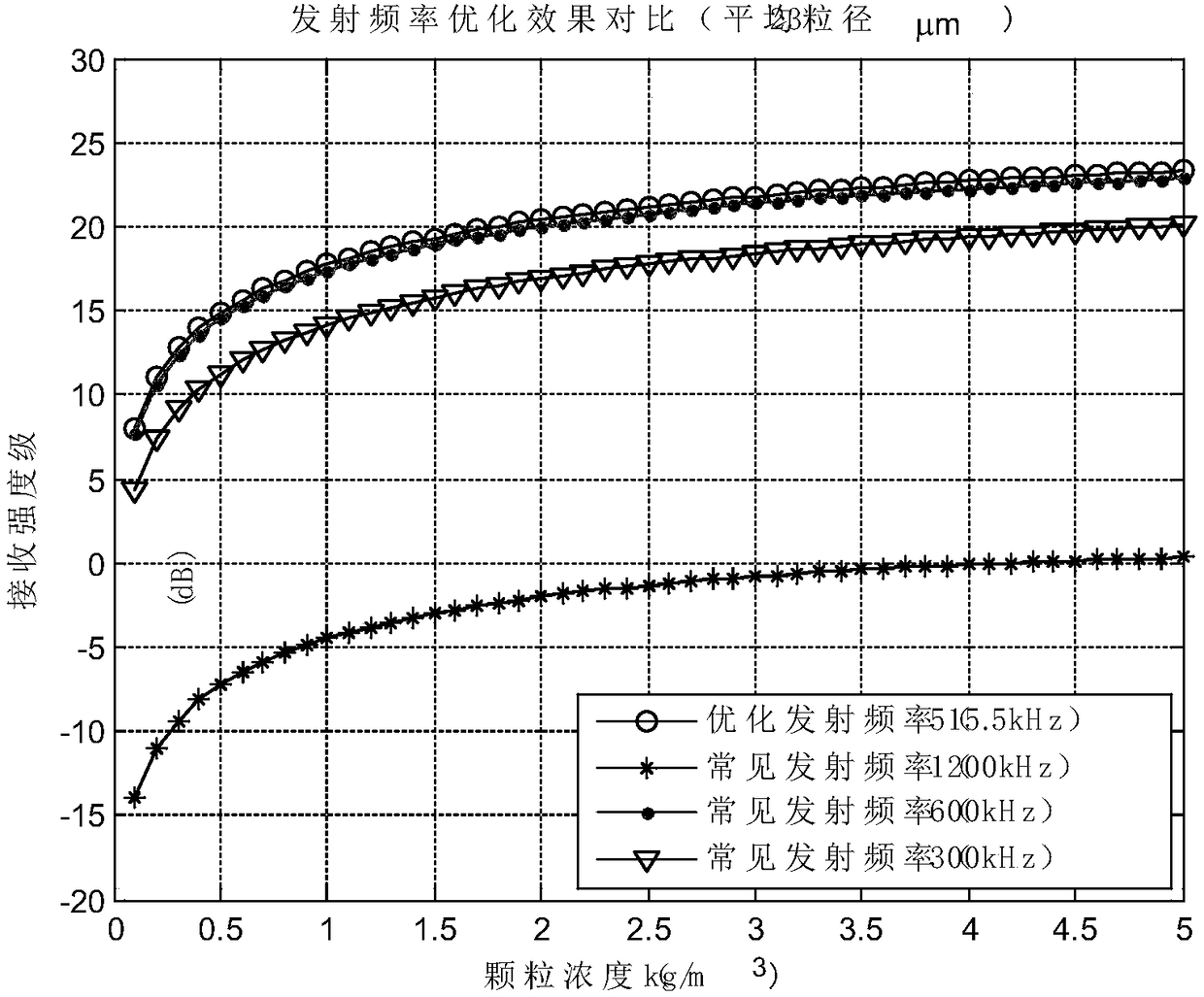Method for optimizing and selecting transmitting frequency of ADCP (acoustic Doppler current profiler) with environmental adaptability
A technology of environmental adaptability and emission frequency, applied in radio wave measurement systems, instruments, etc., can solve the problems of propagation loss, complex geometric scattering, and no optimal emission frequency, etc., and achieve the improvement of echo intensity and signal-to-noise ratio, echo The effect of wave signal-to-noise ratio improvement
- Summary
- Abstract
- Description
- Claims
- Application Information
AI Technical Summary
Problems solved by technology
Method used
Image
Examples
Embodiment Construction
[0037] combine figure 1 , for an ADCP whose working parameters (including transmit power, receiver bandwidth, transducer size, transducer directivity, transmit pulse width, etc.) There is an optimal transmit frequency that maximizes the echo strength.
[0038] According to the work of Robert Urick, the ADCP transducer receiving stage can be represented by the equation RL=SL-2TL+TS+NL. Among them, RL represents the receiving level of the transducer, SL represents the sound source level, TL represents the one-way propagation loss, TS represents the target intensity level, and NL represents the background noise level. The units of the above parameters are decibels (dB). SL, TL, TS and NL can be calculated by the following formula:
[0039] (1) Among them, P is the transmission power, the unit is watt (W), D is the acoustic diameter of the transmitting transducer, the unit is meter (m), λ is the wavelength of the emitted sound wave, the unit is meter (m).
[0040](2) TL=20lgr...
PUM
 Login to View More
Login to View More Abstract
Description
Claims
Application Information
 Login to View More
Login to View More - R&D
- Intellectual Property
- Life Sciences
- Materials
- Tech Scout
- Unparalleled Data Quality
- Higher Quality Content
- 60% Fewer Hallucinations
Browse by: Latest US Patents, China's latest patents, Technical Efficacy Thesaurus, Application Domain, Technology Topic, Popular Technical Reports.
© 2025 PatSnap. All rights reserved.Legal|Privacy policy|Modern Slavery Act Transparency Statement|Sitemap|About US| Contact US: help@patsnap.com



